- Register
- Log in to Tune-In
- Wishlist (0)
-
Shopping cart
(0)
You have no items in your shopping cart.
Beatles News

John Lennon said the work he put into a Paul McCartney was akin to educating a child. He shared why he felt this way.
By the mid-1960s, John Lennon and Paul McCartney wrote their songs apart, but they turned to each other for help perfecting them. According to Lennon, he helped a great deal with some of McCartney’s most popular songs. He explained that while one song was McCartney’s “baby,” he helped write all but the first verse.
McCartney began working on “Eleanor Rigby” based on the image of someone picking up rice after a wedding. He believed this was so poignant that he wanted to write a song about loneliness.
When asked about the song, Lennon said it was “Paul’s baby, and I helped with the education of the child.” By this, he meant that the song would never have grown and matured if it hadn’t been for him.
“Ah, the first verse was his and the rest are basically mine,” Lennon said in the book All We Are Saying: The Last Major Interview With John Lennon and Yoko Ono. “But the way he did it … Well, he knew he had a song. But by that time he didn’t want to ask for my help, and we were sitting around with details
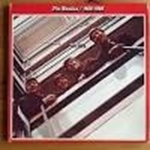
Do we need another compilation album of Beatles covers from their early years 1962-1966? Well, judging from the 85 tracks on the upcoming We Can Work It Out: Covers of The Beatles 1962-1966 the answer would appear to be a resounding yes. The title, on 3-CDs, from U.K. reissue label Cherry Red’s Strawberry imprint, arrives November 24, 2023.
The set includes a broad range of recording styles from such artists as Peter and Gordon, the Supremes, the Mamas & the Papas, Count Basie, Joe Cocker, the Ventures, the Fifth Dimension, Mae West, Jose Feliciano, and Petula Clark.
From the label’s September announcement: “After the release of the band’s first single, ‘Love Me Do,’ in October 1962, Beatlemania commenced almost instantly and soon their own recordings, as well as covers by others, were omnipresent. In this collection we find artists from France, Holland, America, Italy, New Zealand, Hungary, and Puerto Rico, all proving that The Beatles songs were so great that it didn’t matter what language they were sung in. Sunshine pop sits next to raw soul while bluegrass nudges up against jazz.”
Source: Best Classic Bands Staff/bestclassicbands.com

In 1964, The Beatles’ John Lennon, Paul McCartney, George Harrison and Ringo Starr crossed the pond to perform in the United States for the first time.
What followed was an unprecedented level of fanaticism as Beatlemania took hold of America.
Now, a mere 59 years later, 83-year-old drummer Ringo Starr is still out and about on the road with his All Starr Band made up of classic rock icons from Men At Work, Toto, The Edgar Winter Band and more this fall.
However, it appears Beatlemania has subsided a bit; some tickets are shockingly cheap to see the Rock and Roll Hall of Famer live in 2023.
At the time of publication, we found some tickets going for only $8 before fees on Vivid Seats. Yes, there are somehow tickets under $10 available to see one of the two living Beatles live.
Prices for most other shows start anywhere from approximately $45 to $210 before fees.
Source: Matt Levy/nypost.com
details
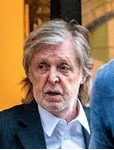
Paul McCartney is embracing a more natural look after being pictured in London this week with white hair and a white beard
Looking closer to his 81 years of age, The Beatles rocker definitely has good hair genes as there is no sign of a receding hairline despite him being an octogenarian. But instead of dying his locks brown - as he was rumoured to have done for 30 years - they are now more of a grey/white.
Although Paul was dressed smartly in a dark suit with a white shirt underneath, he looked like he might be in a hurry to get somewhere as he hadn't shaved. Or could his white stubble be an attempt to regrow the famous beard he rocked in his glory days?
The Hey Jude singer sported a thick beard between 1969 and 1971. Such is the love for it, there are even dedicated blog posts telling his legions of fans how to create the look themselves.
Source:Katie Wilson/mirror.co.uk
details
Beatle George Harrison was pigeon-holed as the "Quiet Beatle," but the youngest member of the Fab Four had an acerbic, dry sense of humor that was as sharp as the rest of his bandmates.
He gave great performances in the musical comedy classics, "A Hard Days Night" and "Help!" while holding his own during The Beatles' notoriously anarchic press conferences. After he left the band in 1970, in addition to his musical career, he would produce the 1979 Monty Python classic, "The Life of Brian."
Harrison clearly didn't lose his sense of humor for the rest of his life. Shortly before his death in 2001, he played an elaborate prank on Phil Collins that shows how the "Here Comes the Sun" singer would go the extra mile for a laugh.
Source: Tod Perry/good.is
details

In 1969, The Beatles attended a Christmas party at Apple Corps. The previous year, George Harrison had invited the Hells Angels to a party that quickly devolved into chaos. At the 1969 party, audio engineer Geoff Emerick worried the night would end in horrible tragedy. The studio was under construction, and as the night wore on, he became increasingly — and rightfully — concerned that the floor would collapse under the partygoers.
At the end of 1969, Apple Corps was under construction. The corporation hosted the Christmas party just after the demolition phase of the project, much to Emerick’s concern.
“The most memorable thing about the 1969 Christmas bash was that it nearly marked the end of Apple … literally,” Emerick wrote in his book Here, There and Everywhere: My Life Recording the Music of the Beatles. “The demolition phase of the studio project had been completed by then, although the construction had not yet begun. As you gazed out the window from the second floor, where the party was being held, you looked straight down into this pit, this great gaping hole where the basement had once been.”
Source: Emma McKee/cheatsheet.com

Sir Paul McCartney has shared what The Beatles didn't realise about Elvis Presley at first.
Glastonbury: Paul McCartney virtually duets with John Lennon
Growing up in later 1950s Liverpool, The Beatles were profoundly influenced by Elvis Presley.
John Lennon was taken aback by Heartbreak Hotel and famously said: “Before Elvis there was nothing.”
Little did the Fab Four know that just over a decade later and The King would be covering their tracks at his live shows.
In fact, the five men who make up the two most successful music acts in history met only once back in 1965, when Elvis invited The Beatles to hang out at his LA home.
Source: George Simpson/express.co.uk
details
The full conversation is also now available to rent for streaming, until October 1.
Another short excerpt from actor Stanley Tucci’s interview with Paul McCartney, filmed at the National Portrait Gallery in London in June, can now be seen at Paul’s official YouTube channel. The full conversation is also now available to rent, until October 1.
Shop the best of Paul McCartney’s discography on vinyl and more.
The interview took place to publicize the Gallery’s exhibit Paul McCartney, Photographs 1963–64: Eyes of the Storm, and the accompanying photographic book 1964: Eyes of the Storm. Both contain the images that he took with his own camera between December 1963 and February 1964, during the period in which The Beatles grew from UK stars into a global sensation.
Source: Paul Sexton/udiscovermusic.com
details
A JOHN Lennon plaque is to be erected in Edinburgh where his aunt lived to mark his many summers spent in Scotland’s capital.
The plaque is set to be placed at the foot of Ormidale Terrace in the Murrayfield area, where the Beatles star regularly spent time with his aunt and cousin until the age of 17.
Lennon is said to have penned the song Rain, the B-side to 1966’s Paperback Writer, in the cupboard under the stairs at his aunt's house.
The plaque is set to be unveiled with an event in Roseburn Park featuring Beatles music, with organisers looking into securing a tribute band.
Source: Steph Brawn/thenational.scot
details
Sir Paul McCartney is said to have been addicted to playing classic arcade shoot-’em-up games before he recorded his hits.
The 81-year-old Beatles icon’s love of being a joystick warrior ahead of studio sessions has been revealed by Echo and the Bunnymen guitarist Will Sergeant.
Paul’s fellow Liverpudlian Will, 65, said in his new book ‘Echoes: A Memoir Continued’ about meeting Sir Paul at London’s Air Studios: “While we’re hanging around in the games room, Paul McCartney pops in and says, ‘So you are the Bunnymen from Liverpool, are ya? Nice to meet you.
“We look on with broad smiles. ‘My God, Paul knows our name and seems to know who we are.’”
Will added: “He sticks around for a brew ands I play a video game with him. It’s either ‘Asteroids’ or ‘Tank Commander’, one of the latest video game crazes.
“Paul was a lovely fellow, still down to earth and quite prepared to be friendly to us young upstarts.”
Source: By Celebretainment/independentnews.com

Despite their legendary rivalry, The Beatles helped The Rolling Stones break into the mainstream by writing them a hit single in 1963.
It's one of the all-time great rivalries.
Pepsi versus Coca-Cola, Muhammad Ali versus Joe Frazier, Tom versus Jerry, Mods versus Rockers, Sherlock Holmes versus Professor Moriarty, Bette Davis versus Joan Crawford, Elton John versus, well everyone else.
Above is just a small handful of some of the most notorious rivalries within the pantheon of popular culture. Pick your side.
One of the most famous conflicts throughout the past century, however, has undoubtedly been between The Beatles and The Rolling Stones.
Both era-defining bands spearheaded the British Invasion during the 1960s and dominated charts around the world.
Source: Thomas Curtis-Horsfall/goldradiouk.com
details
There is one song from The Beatles that is as beautiful as it is lucrative.
The Beatles' iconic songs are a major part of their legacy and have been the driving force behind their success. One song alone has made the group tens of millions of dollars.
The Beatles are the most iconic music act in history, with record-breaking album sales and an indelible mark on the industry. Their innovative approach to music revolutionized the music industry.
The Beatles' catalog is extremely valuable, potentially worth $2 billion. Their music continues to generate significant royalties, showcasing the lasting power and influence of the band.
The Beatles are as big and as good as it gets in the music world, and they're still relevant decades after disbanding. Though they had their problems, some of which were recently brought to light in a documentary, the band went down as legends, and even forged great solo careers.
Source: Anthony Spencer/thethings.com
details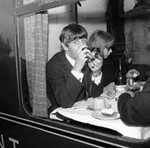
A Beatles engineer thought Ringo Starr shone in 'A Hard Day's Night.' He didn't think Starr came off this way in real life.
In 1964, John Lennon, Paul McCartney, George Harrison, and Ringo Starr starred in the Beatles’ movie A Hard Day’s Night. They enjoyed the experience, and their fans loved the film. The people who knew The Beatles also enjoyed their viewing experiences. Audio engineer Geoff Emerick, who worked extensively with the band, said it showed him a different side of the musicians. In particular, he appreciated the fact that the typically reserved Starr came across well.
When Emerick saw A Hard Day’s Night, he had some issues with the music but no complaints about The Beatles’ performances. He also appreciated the fact that he had the insider knowledge to recognize that their onscreen personas did not match their real personalities.
“The Beatles themselves were portrayed as four stereotypes in the movie, and I remember sitting there thinking to myself, ‘They’re not really like that’ — though I was probably the only one in the theater who knew that,” he wrote in his book Here, There and Everywhere: My Life Recording the Music of the B details
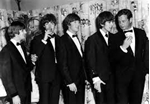
The Beatles rolled their eyes at news Brian Epstein thought would thrill them. Here's how he reacted to their lack of interest.
In 1967, Brian Epstein rushed into the studio to give The Beatles what he saw as thrilling news. He’d booked them a spot on a television program that would reach televisions around the world. Epstein saw this as a once-in-a-lifetime opportunity; for the first time ever, a satellite would transmit a program worldwide. The Beatles didn’t think this was nearly as monumental as Epstein did. Their lack of interest nearly drove him to tears.
While The Beatles were putting the finishing touches on Sgt. Pepper’s Lonely Hearts Club Band, Epstein rushed into the studio with exciting news. He didn’t often visit them during recording sessions, so everyone in the room eagerly awaited his announcement.
Source: Emma McKee/cheatsheet.com
details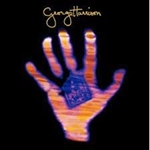
Dhani Harrison, son of The Beatles’ star George Harrison, tells a wonderful story in the Martin Scorsese documentary, "George Harrison: Living in the Material World," that speaks to the modesty of his famous father. Dhani said he couldn’t understand why kids at school chased after him singing "Yellow Submarine." "It just seemed surreal. Why are they singing that song to me?" he wondered. Then, he discovered the answer. "I came home, and I freaked out on my dad: ‘Why didn’t you tell me you were in The Beatles?' And he said, ‘Oh, sorry. Probably should have told you that.’
While many rock stars—like many business leaders—can be arrogant, self-centered and full of themselves, Harrison was renowned for being sincere, humble, kind and collaborative. These attributes are often exhibited by the best corporative executives, which defies the conventional wisdom that top leaders need to be forceful, charismatic individuals who thrive in the limelight. It’s something I’ve observed working with companies across the country, and it’s an observation that’s backed by several university studies.
Source: Jason Richmond/forbes.com
